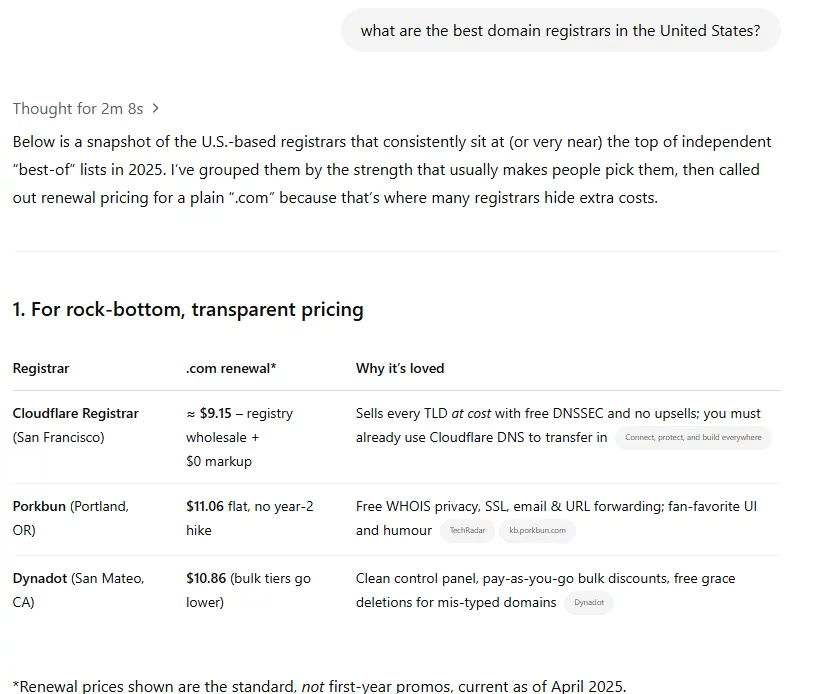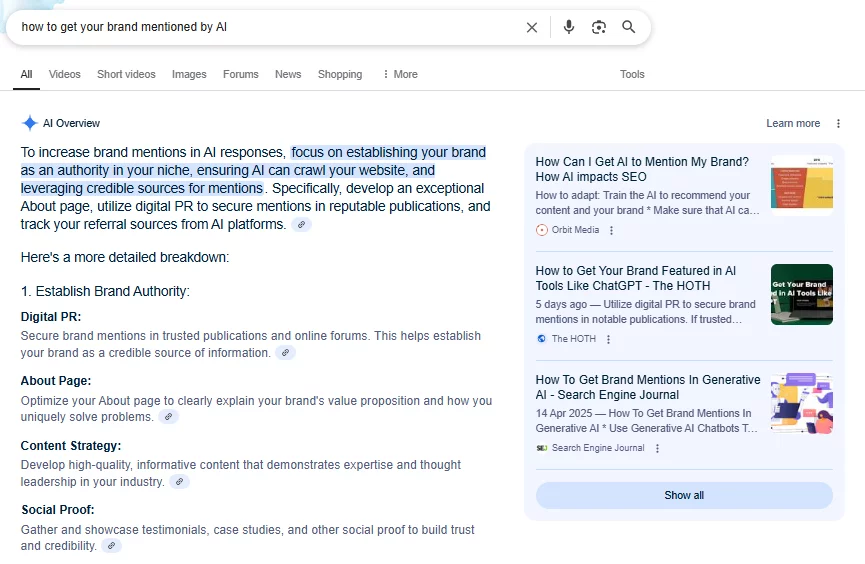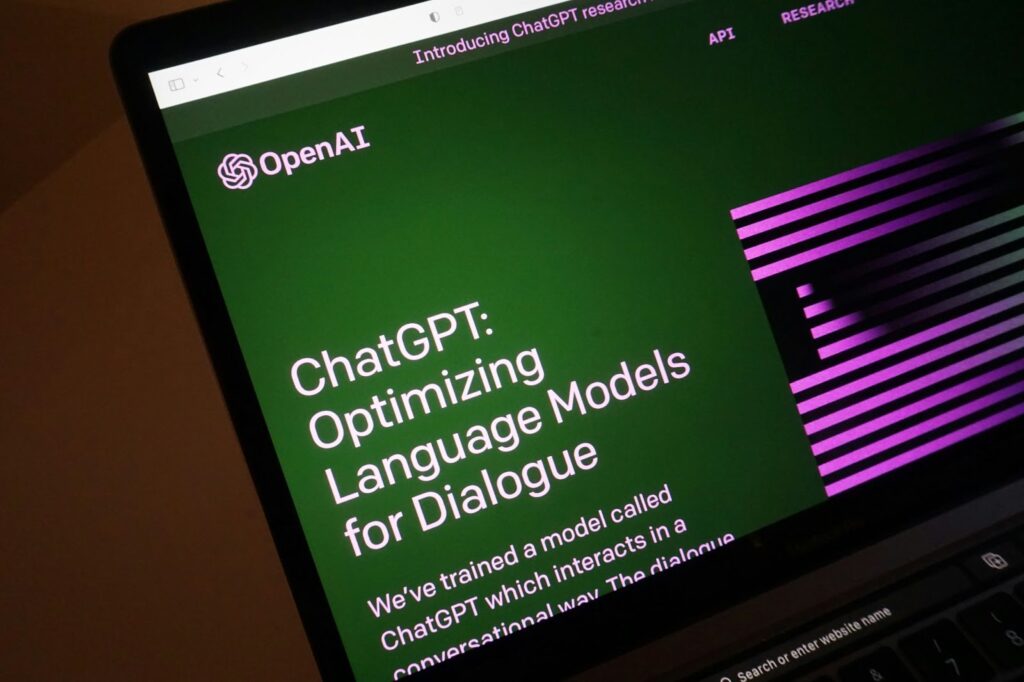- Joined
- Oct 12, 2023
- Messages
- 114
- Reaction score
- 23
The biggest shake‑up in online search since Google’s blue links is already here. It’s called generative search, and brands that learn to speak the language of large language models (LLMs) today will own the conversation tomorrow.
For over two decades since the invention of Google, search engine optimization (SEO) has been about positioning web pages in lists of ten blue links. In the past year, this model has been challenged by generative AI engines – systems such as OpenAI’s ChatGPT, Perplexity, Google’s AI Overviews and Gemini, and Bing Copilot – that answer questions directly instead of pointing users to pages.
Alongside their rapid adoption – for example, ChatGPT is expected to take 1% of the search market by the end of 2025 – a new marketing discipline emerges. Generative Engine Optimisation (GEO) covers making your brand, products and expertise visible inside those AI‑generated answers and getting direct links to your website from them.
Traditional SEO still matters (generative engines draw heavily on high‑quality crawlable pages with great content and overlap in optimization tactics with usual search) but the success metric in GEO is changing from position #1 to presence inside the AI-generated answer.

ChatGPT response to a prompt “What are the best domain registrars in the United States?”
LLMs don’t rank pages; they predict the most plausible next words based on massive training dataset, real‑time web data and retrieval‑augmented generation. Repetition, authority signals and clear entity relationships all increase the probability that your brand is mentioned in the AI model’s response.
Think of it like a panel discussion, where the model is the moderator. It will quote the panellists (your competitors) it “knows” about most, whose points are well‑documented, consistent and easy to recall.
Early‑mover advantage. Generative answer boxes are still volatile. Establishing topical authority now bakes your brand into the LLMs that countless downstream apps will use.
Richer visibility. AI answers can cite sources, surface brand snippets, even generate purchase links. Being in those citations drives qualified traffic – often with far less clutter than SERPs.
Trust transfer. Users confer higher trust on information spoken by an objective‑sounding AI. When the bot quotes you, that halo transfers.
Voice, chat & assistants. GEO future‑proofs your content for voice assistants, car dashboards and AR interfaces where there is no scrolling.

Google’s AI Overview to a prompt “How to get your brand mentioned by AI?” with links to sources
1. Structured, machine‑readable data
Marked‑up entities (Product, FAQ, HowTo, Author, Organisation) on your website help retrieval systems match your content to user intents. Leverage schema.org and JSON‑LD consistently.
2. Topical depth over keyword density
LLMs reward in-depth subject matter expertise. Build interconnected content clusters on your website: cornerstone explainers, deep dives, practical checklists and opinion pieces.
3. Entity clarity and consistency
List your brand’s name, domain, social handles and key people the same way everywhere – website, press releases, Wikidata, Crunchbase – to strengthen the knowledge graph.
4. Fresh, factual content
AI hallucinations are the main enemy of generative answers. Regularly updated statistics, dates and citations make your pages safe to quote.
5. Brand & reputational signals
Reviews, mentions, podcast appearances and authoritative backlinks act as confidence boosts. Encourage coverage and maintain a unified public relations (PR) voice.
6. Technical excellence
Fast load times, clean code and accessible design ensure search crawlers (and any retrieval layer feeding the LLM) can parse your site without friction.

Source: Unsplash
Start with auditing your current presence in AI engines. Prompt tools like ChatGPT Search, Gemini, Perplexity, You.com and Bing Copilot with your top questions and related queries – for example, “What products, services, or experiences does it.com Domains offer?” Note whether your domain is cited – and where your competitors are.
Map buyer‑journey questions. List informational, comparative and transactional queries your customers ask. Turn each into a content brief to build a strong content cluster. Importantly, the average prompt (~23 words) is 5x larger than a search query (~4 words), so it’s more important to provide content covering the whole user journey than target individual keywords.
Rewrite key assets for conversational tone. Answer “how”, “why” and “what if” explicitly, using natural language the model can lift from.
Add structured data. Implement FAQPage, HowTo and Product schema at scale. Test with Google’s Rich Results tool. Another way to help LLMs to ‘understand’ your content is adding llms.txt file to your website which gives language models a clear map of high-value content.
Optimise your domain portfolio. Short, memorable domains (think brand.it.com) increase citation likelihood and anchor entity recognition.
Submit to public knowledge bases. Create or update entries in Wikidata, Crunchbase, GitHub README, industry directories.
Monitor GEO performance. Solutions like Wix’s LLM Brand Visibility Tracker log where and how often models mention your brand. Use insights to refine content.

Comparison of performance metrics between traditional search and LLMs. Source: aleydasolis.com
Your domain name is often the first text string an LLM sees and the token it stores to represent your brand. A clear, keyword‑rich or category‑defining name:
With it.com Domains, you can secure exact‑match or descriptive domains that plant your expertise firmly in the model’s knowledge graph.
Generative Engine Optimisation isn’t a fad – it’s the next layer of search. Businesses that treat GEO as a strategic extension of SEO will capture high‑intent audiences wherever AI answers appear.
Start by auditing your content, tightening your entity signals and claiming the domain names that encapsulate your value. The sooner you teach the machines to talk about you, the louder your voice will be in the search experiences of tomorrow.
Ready to future-proof your online visibility? Visit it.com Domains blog and follow us on social media.
Continue reading on the it.com Domains blog...
From SEO to GEO: a quick primer
For over two decades since the invention of Google, search engine optimization (SEO) has been about positioning web pages in lists of ten blue links. In the past year, this model has been challenged by generative AI engines – systems such as OpenAI’s ChatGPT, Perplexity, Google’s AI Overviews and Gemini, and Bing Copilot – that answer questions directly instead of pointing users to pages.
Alongside their rapid adoption – for example, ChatGPT is expected to take 1% of the search market by the end of 2025 – a new marketing discipline emerges. Generative Engine Optimisation (GEO) covers making your brand, products and expertise visible inside those AI‑generated answers and getting direct links to your website from them.
Traditional SEO still matters (generative engines draw heavily on high‑quality crawlable pages with great content and overlap in optimization tactics with usual search) but the success metric in GEO is changing from position #1 to presence inside the AI-generated answer.

ChatGPT response to a prompt “What are the best domain registrars in the United States?”
LLMs don’t rank pages; they predict the most plausible next words based on massive training dataset, real‑time web data and retrieval‑augmented generation. Repetition, authority signals and clear entity relationships all increase the probability that your brand is mentioned in the AI model’s response.
Think of it like a panel discussion, where the model is the moderator. It will quote the panellists (your competitors) it “knows” about most, whose points are well‑documented, consistent and easy to recall.
Why GEO should be on your 2025 roadmap
Early‑mover advantage. Generative answer boxes are still volatile. Establishing topical authority now bakes your brand into the LLMs that countless downstream apps will use.
Richer visibility. AI answers can cite sources, surface brand snippets, even generate purchase links. Being in those citations drives qualified traffic – often with far less clutter than SERPs.
Trust transfer. Users confer higher trust on information spoken by an objective‑sounding AI. When the bot quotes you, that halo transfers.
Voice, chat & assistants. GEO future‑proofs your content for voice assistants, car dashboards and AR interfaces where there is no scrolling.

Google’s AI Overview to a prompt “How to get your brand mentioned by AI?” with links to sources
6 pillars of Generative Engine Optimisation
1. Structured, machine‑readable data
Marked‑up entities (Product, FAQ, HowTo, Author, Organisation) on your website help retrieval systems match your content to user intents. Leverage schema.org and JSON‑LD consistently.
2. Topical depth over keyword density
LLMs reward in-depth subject matter expertise. Build interconnected content clusters on your website: cornerstone explainers, deep dives, practical checklists and opinion pieces.
3. Entity clarity and consistency
List your brand’s name, domain, social handles and key people the same way everywhere – website, press releases, Wikidata, Crunchbase – to strengthen the knowledge graph.
4. Fresh, factual content
AI hallucinations are the main enemy of generative answers. Regularly updated statistics, dates and citations make your pages safe to quote.
5. Brand & reputational signals
Reviews, mentions, podcast appearances and authoritative backlinks act as confidence boosts. Encourage coverage and maintain a unified public relations (PR) voice.
6. Technical excellence
Fast load times, clean code and accessible design ensure search crawlers (and any retrieval layer feeding the LLM) can parse your site without friction.

Source: Unsplash
Getting started: an action checklist
Start with auditing your current presence in AI engines. Prompt tools like ChatGPT Search, Gemini, Perplexity, You.com and Bing Copilot with your top questions and related queries – for example, “What products, services, or experiences does it.com Domains offer?” Note whether your domain is cited – and where your competitors are.
Map buyer‑journey questions. List informational, comparative and transactional queries your customers ask. Turn each into a content brief to build a strong content cluster. Importantly, the average prompt (~23 words) is 5x larger than a search query (~4 words), so it’s more important to provide content covering the whole user journey than target individual keywords.
Rewrite key assets for conversational tone. Answer “how”, “why” and “what if” explicitly, using natural language the model can lift from.
Add structured data. Implement FAQPage, HowTo and Product schema at scale. Test with Google’s Rich Results tool. Another way to help LLMs to ‘understand’ your content is adding llms.txt file to your website which gives language models a clear map of high-value content.
Optimise your domain portfolio. Short, memorable domains (think brand.it.com) increase citation likelihood and anchor entity recognition.
Submit to public knowledge bases. Create or update entries in Wikidata, Crunchbase, GitHub README, industry directories.
Monitor GEO performance. Solutions like Wix’s LLM Brand Visibility Tracker log where and how often models mention your brand. Use insights to refine content.

Comparison of performance metrics between traditional search and LLMs. Source: aleydasolis.com
Domains: the underrated GEO accelerator
Your domain name is often the first text string an LLM sees and the token it stores to represent your brand. A clear, keyword‑rich or category‑defining name:
- Improves memorability in generative snippets.
- Signals niche authority (e.g., cybersecurity.it.com).
- Creates semantic proximity between brand and product terms.
With it.com Domains, you can secure exact‑match or descriptive domains that plant your expertise firmly in the model’s knowledge graph.
Generative Engine Optimisation isn’t a fad – it’s the next layer of search. Businesses that treat GEO as a strategic extension of SEO will capture high‑intent audiences wherever AI answers appear.
Start by auditing your content, tightening your entity signals and claiming the domain names that encapsulate your value. The sooner you teach the machines to talk about you, the louder your voice will be in the search experiences of tomorrow.
Ready to future-proof your online visibility? Visit it.com Domains blog and follow us on social media.
Continue reading on the it.com Domains blog...









